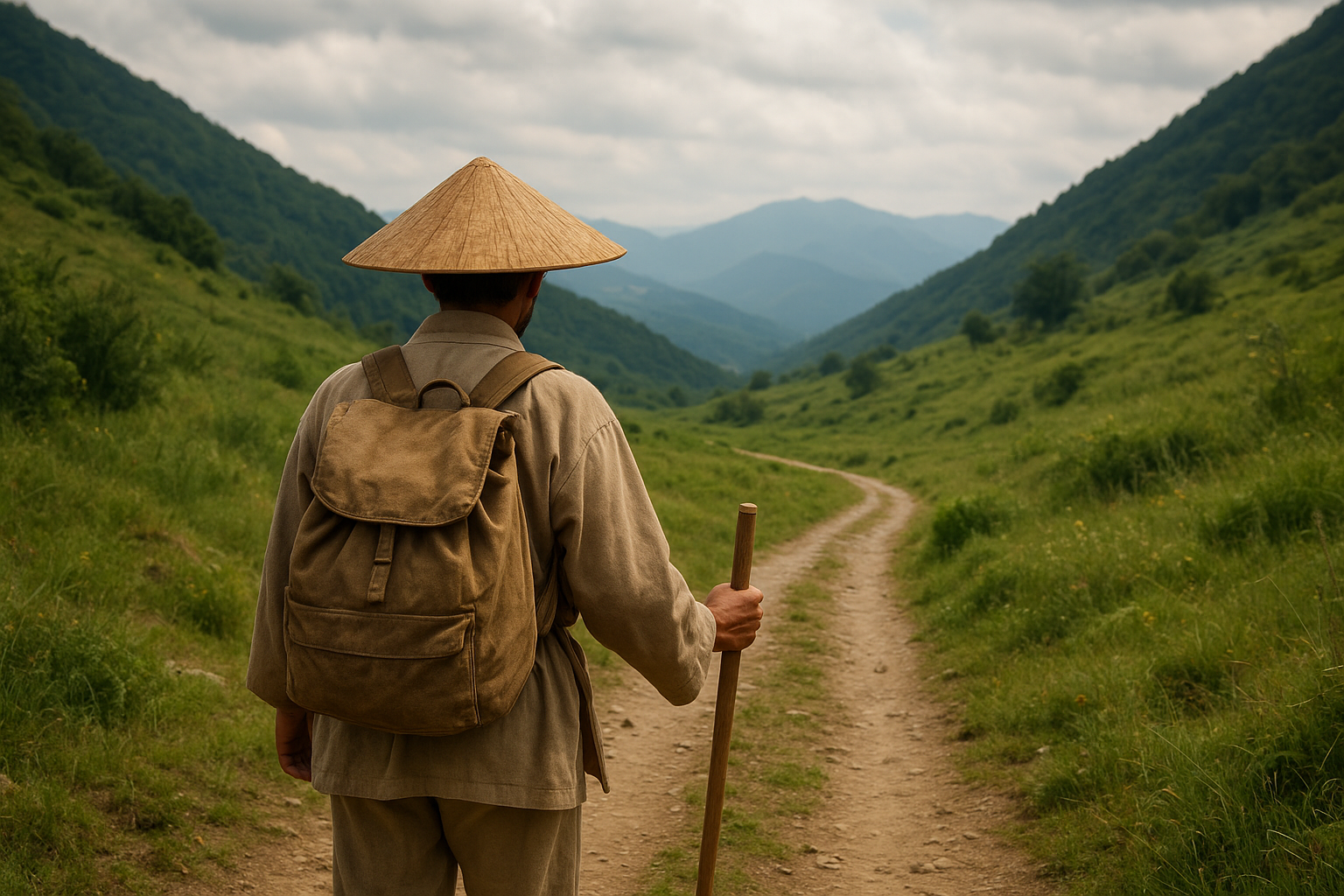The Quiet Pilgrim: Traveling in Silence and Awareness
Traveling has always been a journey not just of the feet, but of the soul. Yet, in our hyper-connected, continually noisy world, the art of silent traveling — moving not just with quiet steps but with a silent mind — has nearly been lost. The quiet pilgrim revives this ancient art, embarking on journeys of deep introspection and acute awareness, finding meaning in silence and presence.
The Philosophy of Silent Travel
Silent travel is not merely the absence of sound but a conscious choice to foster a deeper connection with one’s surroundings and inner self. It is based on practices and philosophies that embrace mindful awareness, urging travelers to be fully present in each moment. This form of travel invites individuals to listen more attentively to the world, discovering stories spoken not in words but in the whisper of a breeze or the rustle of leaves.
“The real voyage of discovery consists not in seeking new landscapes, but in having new eyes.” — Marcel Proust
Proust’s words resonate deeply with the quiet pilgrim. This new way of seeing does not require grand vistas or thrilling adventures. Instead, it involves a quiet openness to whatever arises in the journey’s path, allowing each moment to reveal its own beauty and lessons.
Practices for the Quiet Pilgrim
Embracing the way of the quiet pilgrim requires certain practices and a shift in mindset. Here are some key elements:
- Meditative Walking: This practice involves walking with full attention on each step and breath, merging the body and mind in the present moment.
- Mindful Listening: Focus intently on the sounds of your surroundings. With each sound, observe its texture and origin without judgment.
- Observation Without Labels: Look at each object, person, or scene without naming or categorizing, seeing things as if for the first time.
- Journaling: End each day by noting down feelings and observations. This promotes a reflective state of mind and preserves the silent insights gained.
Silent Destinations: Where to Embrace Tranquility
While the journey of a quiet pilgrim begins from within, certain destinations amplify the experience of silence and solitude:
1. Japanese Zen Gardens
These meticulously designed spaces offer a sanctuary for peaceful contemplation. The simplicity and harmony in their design inspire a meditative state even in novice practitioners. Kyoto, in particular, hosts several stunning examples such as the Ryoan-ji Temple.
2. Saharan Desert
The vast emptiness of the Sahara invites a profound encounter with solitude. The absence of human noise serves as a powerful mirror, reflecting back the thoughts swirling within.
3. Scandinavian Forests
The deep, ancient woods of Scandinavia provide a natural cocoon of silence. Swedish law, known as Allemansrätten, allows free access to roam these serene spaces, encouraging an intimate connection with nature.
Benefits of Traveling in Silence
The benefits of embracing silent travel are numerous and profound. Here are a few:
- Deepened Awareness: Silence clears the mind, fostering deeper awareness of your surroundings.
- Stress Reduction: By escaping the distractions of daily noise, the body and mind find relaxation and balance.
- Enhanced Creativity: In the absence of the usual noise, the mind has the freedom to explore new thoughts and inventive ideas.
- Connection to Nature: As silence envelops the traveler, a more profound connection to the natural world is cultivated.
Stories from Silent Travelers
Many who have embarked on silent journeys share transformative experiences. Travel + Leisure features accounts of individuals who, after embracing quiet travel, discovered new perspectives on life and self. One traveler noted:
“In the depth of the forest, I heard the song of life itself. It was not that sound had been absent; it was that I had not been listening.”
Embarking on Your Own Silent Journey
If the call of silent travel speaks to your heart, the journey need not be grand or far-reaching. Begin within your own community: a quiet early morning walk in a nearby park, a day without digital distractions, or a weekend retreat focused on silence and meditation. The key lies in intent, the resolve to step into the world with quietude and mindfulness.
In conclusion, the path of the quiet pilgrim is one that promises not just a journey but a transformation. By walking it, you may find yourself stepping towards not just new destinations, but towards a renewed state of being. Embrace this silent path, and allow its unfolding to etch new dimensions into the tapestry of your life.



